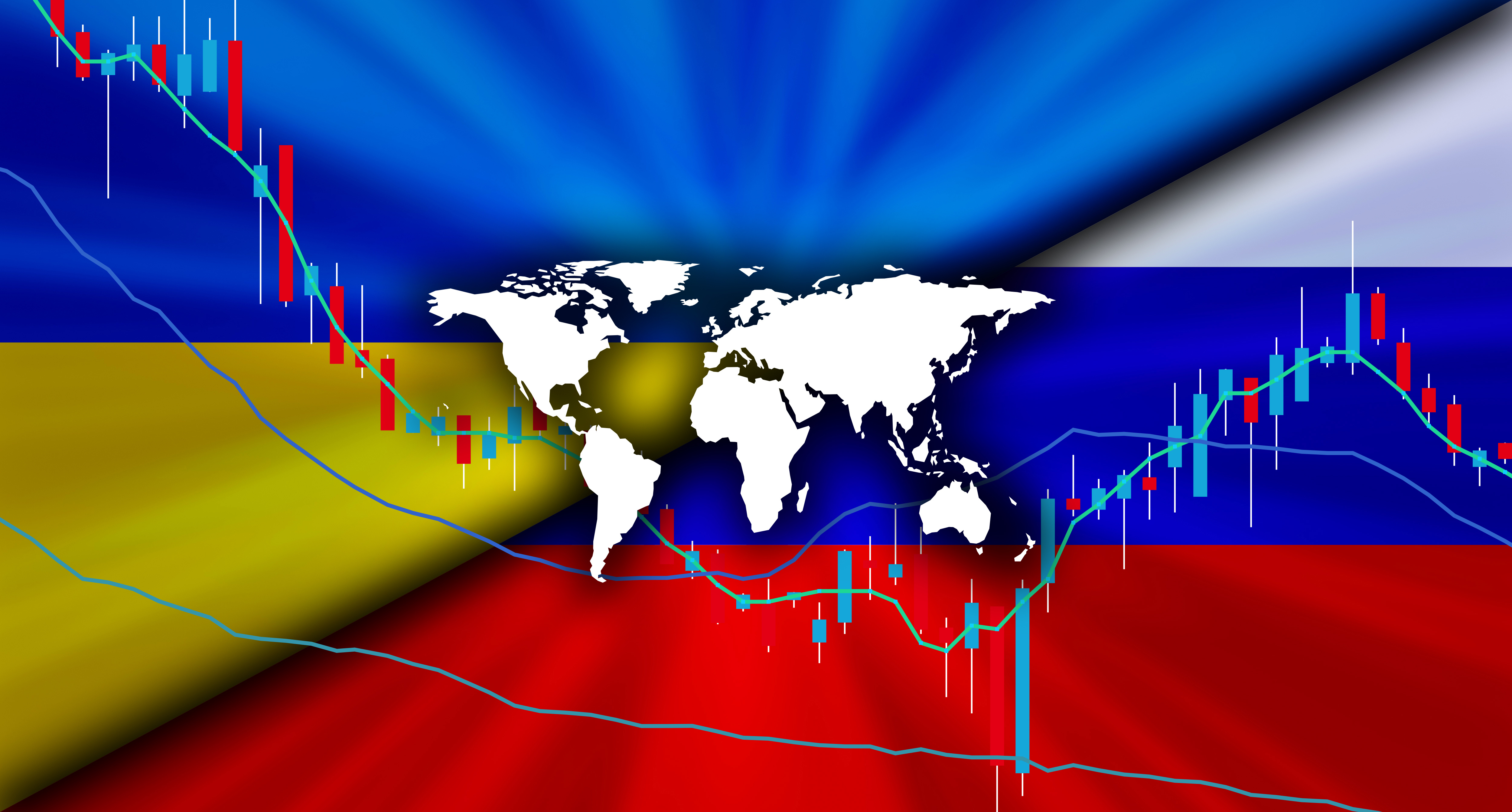 As the war in Ukraine has now passed the 40-day mark, the global effects are becoming more apparent as these five statistics show:
As the war in Ukraine has now passed the 40-day mark, the global effects are becoming more apparent as these five statistics show:
1. Global trade value down
The value of global trade fell 2.8% between February and March due to a sharp drop in container ship traffic from Russia and Ukraine, according to the Kiel Institute for the World Economy which tracks shipping data from 500 ports in real time.
Russia’s imports were down 9.7% and exports fell 5%.
EU exports dropped by 5.6% in March and imports by 3.4%. The US affected less with exports falling 3.4% and imports down 0.6%.
China was least affected with exports down 0.9% and imports up by 0.9%.
2. War inhibiting UK exporters
The Quarterly Exporter Monitor for March found exporter counts and revenues had gone up by 2.33% and 2.99% respectively across all UK regions in March 2022 compared to February 2022.
However, this was roughly half the growth rate predicted in the last forecast, reflecting downside risks including the Russia-Ukraine crisis.
Coriolis Technologies chief executive Dr Rebecca Harding said: “Since 2020 there has been a general drop in exporter activity and so seeing the expected post-Covid rebound fall flat offers little hope for growth as global geopolitical risk heightens. Our data has been indicating a decline in exports and exporters since last year, and our forecast is for further downside risk because of sanctions and uncertainty in the wake of the Russia-Ukraine crisis.”
3. Freight rate rises
The Ukraine crisis could lead to much higher container freight rates which will in turn adversely affect economies, especially those in vulnerable conditions, according to UNCTAD.
Restrictive measures on airspace, contractor uncertainty and security concerns are complicating all trade routes going through Russia and Ukraine.
In 2021, 1.5 million containers of cargo were shipped by rail west from China to Europe. If the volumes currently going by container rail were added to the Asia-Europe ocean freight demand, this would mean a 5% to 8% increase to an already congested trade route.
The disruption has already been felt across the segment for smaller tankers in the Black Sea and Baltic Sea regional oil trade.
“Black Sea-Med aframax and suezmax tanker earnings have jumped from about $10,000 a day on February 18 to more than $170,000 a day on February 25. The underlying freight costs have increased by about 400%,” UNCTAD said.
4. Asia Pacific growth down
The war has dampened economic growth and increased poverty for developing countries in east Asia and the Pacific, the World Bank has warned.
China, which dominates the region with 86% of output, is forecast to expand 5% in 2022, 0.4% less than the World Bank’s October estimate. In the Bank’s downside scenario, the Chinese economy could grow by just 4%, reports the Guardian.
A study of the impact of geopolitical conflicts on trade, growth, and innovation in Vox EU claims the war has focused debate on the economic repercussions of a shift in global trade policy focus from open trade policies to geopolitical considerations limiting interdependence.
It claims that a potential decoupling of the global trading system into US-centric and China-centric bloc would reduce global welfare in 2040 compared to a baseline by about 5%. Losses would be largest (more than 10%) in low-income regions that benefit most from positive technology spillovers from trade.
5. Food price hike hits poorest
Food prices have been rising since January, reports Economics Observatory. The Food and Agriculture Organization (FAO) of the United Nations reports that the food price index is 24.1% higher than it was a year ago, with poorest countries hit hardest.
WTO boss Ngozi Okonjo-Iweala has warned that rocketing global food prices as a result of the war could trigger riots from those going hungry in poor countries, the Guardian reported.
Rich countries are also being affected. In the UK, food price inflation hit 4.3% in February 2022, the highest in about a decade, according to the ONS.



